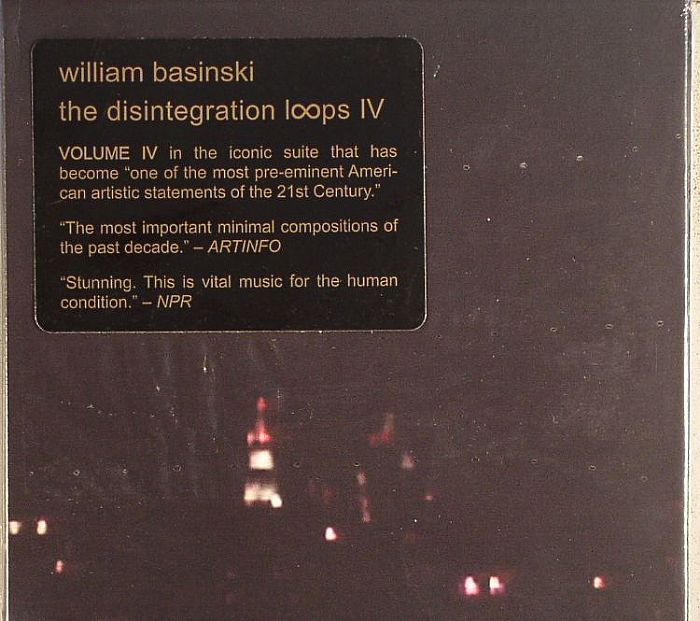
The most compelling evidence of its significance is the disc of live performances included in this set. Almost by accident-or fate-Basinski created one of the first major works of the 21st Century. Listening to the lingering death of these long-forgotten tapes gives them new and eternal life as a memorial to 9/11. In her liner notes to The Expanding Universe, a recent collection of her electronic music from the 1970s, Laurie Spiegel wrote: “To my mind, entropy may well be the most powerful underexplored variable in all of music, the most general highest level variable, the one by which music is made to feel really alive.” On The Disintegration Loops, the brute force of entropy is communicated directly through music. The Disintegration Loops can be heard as prayerful, contemplative meditations on death and how death gives meaning to life-and this would be true even if 9/11 never happened. Instead, they are transformed, by chance, into art. Had these original tape loops remained in pristine condition they would merely be well-crafted ambient music. When it, too, finally succumbs to the withering grind of the tape head, the effect is profoundly moving, like watching the sands of time eroding a mountain into tiny particles of dust. The hour-plus long “dlp 1.1” is the most successful of the six, with the addition of the synthesized horn providing a memorable hook, a fleetingly beautiful melody which stubbornly perseveres while the rest of the music frays and disappears around it. The original tape loops are skillfully constructed with a haunted yet stately grace, like the decayed, nostalgic pomp of Erik Satie, only electronically rendered.

It begs the question: shorn of its incredible backstory, does the music hold up on its own? I think so, even if the fortuitous physical destruction of the medium is what makes it work. At 12 pounds and over five hours of music, it is overwhelming-almost as overwhelming as the events of that day-but it serves as a fitting monument. In commemoration, Temporary Residence has reissued The Disintegration Loops in a lavish, limited edition box set containing nine LPs, five CDs, a DVD and a 144-page coffee table book with liner notes by Antony Hegarty, David Tibet and Basinski himself. In 2002, Basinski released the complete Disintegration Loops on his own 2062 label on four CDs and the video has since been selected for inclusion in the 9/11 Memorial Museum currently under construction at Ground Zero. Combined with “dlp1.1,” the video became an internet sensation: a disturbing, somber elegy to the victims of 9/11. He and his friends set up a video camera to record the last hour of daylight, the toxic smoke of death and destruction billowing across the sky as it slowly faded to black. Listening to The Disintegration Loops throughout the day, their sad, slow decay took on a new poignancy. Basinski watched the World Trade Center burn and fall from the roof of his Brooklyn apartment building. Unsure what he might do with them, Basinski completed their digital transfer on September 10, 2001. Not surprisingly, other tapes from this stash also exhibited the same degradation and he decided to call the collection The Disintegration Loops. Barinski allowed the loop to sputter on to its final death, an hour or so later. When he returned, he was shocked to discover the sound had radically deteriorated-in fact, the 20-year-old tape was gradually disintegrating, shedding flakes of ferrite with every pass over the playback head-and the sweet, pastoral original was being slowly obliterated.

Basinski put the first loop into the tape machine, added a plaintive, synthesized horn line and left the studio to let it record for a while.

These were tapes he made back in the 1980s by recording snippets of the local Muzak radio station in New York and then looping and layering them to create melancholic washes of sound. In the summer of 2001, composer William Basinski decided to digitize a number of old analog tape loops found in a closet, in order to preserve them for his archives. The story of The Disintegration Loops is truly astonishing and key to understanding its significance as a work of art.


 0 kommentar(er)
0 kommentar(er)
